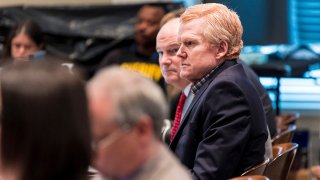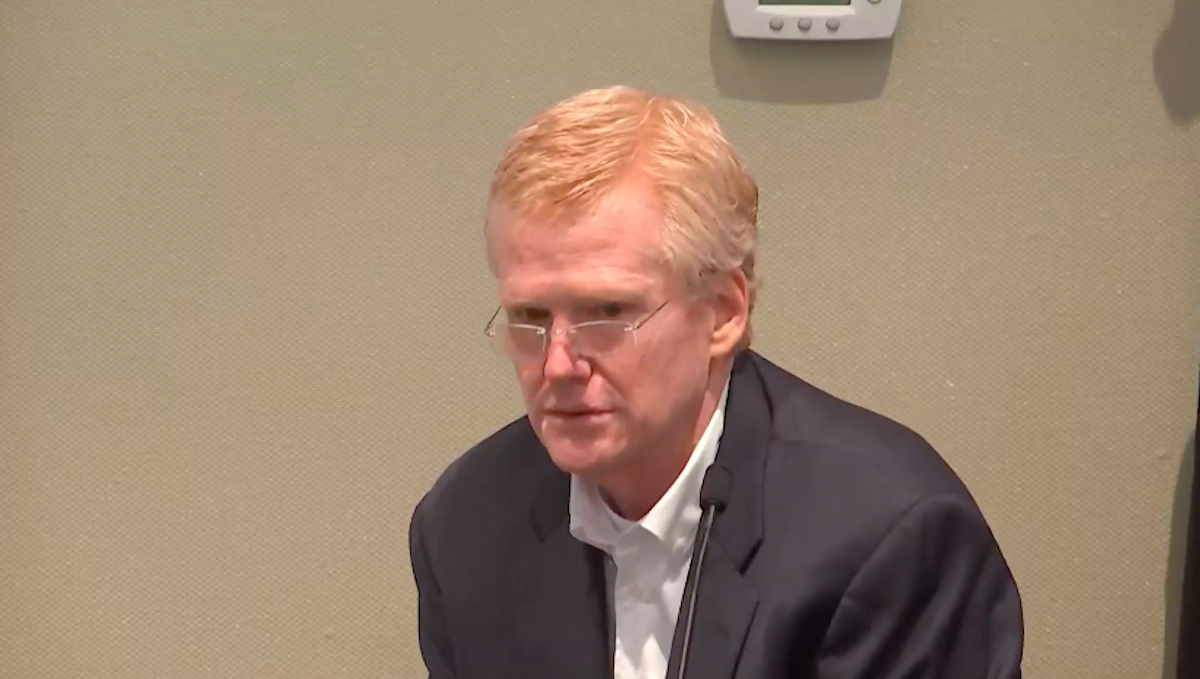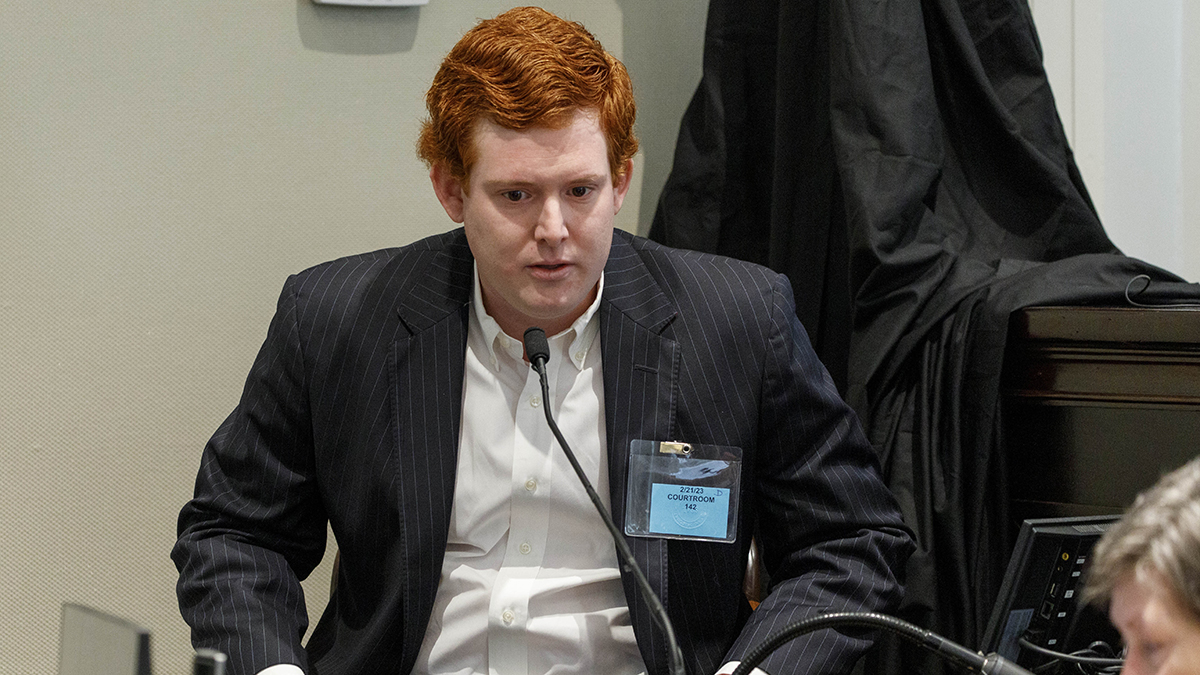
A defense expert in the double murder trial of disgraced South Carolina attorney Alex Murdaugh testified Monday that he thinks two different shooters killed Murdaugh's wife and son.
While the idea has hovered over the trial because two different weapons were used and no evidence has been presented suggesting either victim tried to defend themselves, crime scene expert Tim Palmbach was the first witness to suggest the two-killer theory in testimony.
Investigators have said 52-year-old Maggie Murdaugh was shot four or five times with a rifle, while 22-year-old Paul Murdaugh was killed by two shotgun blasts near kennels on the family's sprawling Colleton County property on June 7, 2021.
Also on Monday, the judge agreed to a defense request to let the jury visit the family property and see the crime scene for themselves before they deliberate Alex Murdaugh's fate. The date for that trip has not been set.
Murdaugh, 54, is charged with murder in the deaths of his wife and son. He faces 30 years to life in prison if convicted. Before the jury visit issue came up, both sides suggested that closing statements and deliberations could begin this week.
Palmbach testified Monday that the likelihood of two shooters was mostly common sense. All evidence so far has indicted the two people killed were shot close to the same time. They stopped using their cellphones within seconds of each other. Both victims appeared to be surprised, with their hands down and no evidence either of them tried to come to the other's aid or was running away.
The second, fatal shotgun blast to Paul Murdaugh's head was at close range, meaning blood, skull fragments, other matter and possibly pellets would have been launched back at the shooter, Palmbach said.
That shooter ”minimally was stunned — probably blood and material in his eyes and maybe have been injured and would have taken some degree of time to recover," Palmbach said.
Also, carrying two long guns would have been cumbersome and awkward given that the rifle used to kill Maggie Murdaugh could have had a clip that carried 20 to 30 bullets. “You can’t handle and shoot both of them," he said.
Feeling out of the loop? We'll catch you up on the Chicago news you need to know. Sign up for the weekly Chicago Catch-Up newsletter.
An important part of Alex Murdaugh's defense is to show that investigators failed to thoroughly collect crime scene evidence and to sow doubt about expert testimony for the prosecution stating that authorities did everything possible to find the killer.
The defense also used Monday's testimony to point out that neither weapon used in the shootings has been found, that state agents at the scene didn't look for footprints or fingerprints and that no evidence of blood, brain matter or other material from the killings were found on Murdaugh or his clothes.
The shooter "would have been literally covered in all that material,” Palmbach said.
There were only 16 minutes between the time the victims stopped using their cellphones and when Alex Murdaugh left his house about 1,100 feet from the crime scene to visit his ailing mother. He called 911 when he found the bodies shortly after returning home.
In cross-examination, prosecutors focused on Palmbach's analysis that the fatal shotgun blast was fired from above Paul Murdaugh's head, even though hair, blood and other material was found on the ceiling above in a storage closet the family called the feed room.
Palmbach said the force of gases from the shotgun blast was like a bomb inside the enclosed skull, sending particles out of the same hole the shot created.
Alex Murdaugh cried several times during the graphic testimony. Monitors the courtroom audience can use to see evidence were covered as they have been whenever crime scene and autopsy photos are shown.
After five weeks inside the Colleton County courthouse, jurors will soon visit the crime scene. Judge Clifton Newman agreed with a defense request to let them go to the Murdaugh's home, called Moselle.
Defense attorney Dick Harpootlian said Monday that it’s important for the jury to see “how small the feed room is ” and “where the feed room is compared to Maggie's body."
“You just cant really appreciate the spatial issues without really seeing them,” he said.
Prosecutors told the judge that they didn't want the jury to visit because it has been 20 months since the killings and it looks different.
Prosecutor Creighton Waters said trees planted between the Murdaugh home and the kennels shortly before the killings have grown taller and thicker.
“If anything, that would require additional testimony because the scene is different,” Waters said on the trial's 25th day.
Newman said he usually allows a visit if either side requests it. Only the jury, the judge, lawyers, and police and security personnel can be there.
The judge agreed with Harpootlian's request for Colleton County deputies to provide additional security on the property, which is currently under contract with a buyer for $3.9 million.
The defense lawyer said over the weekend that several trespassers were found taking selfies outside the feed room where Paul Murdaugh died.
“It's the most distasteful thing we've ever seen,” Harpootlian said.



